While international accompaniment is at its core a response to the requests of Guatemalan communities and a tool for the protection of human rights, it is also a radical practice of showing up in solidarity and grappling with the deeper questions of structural injustice. Current accompanier Chris Shorne shares a poignant reflection from the Ixil region and highlights the disturbing parallels between the war crimes committed against the Guatemalan Ixil civilian population and actions by the Trump administration. This is particularly relevant as the Trump administration appears likely to appoint Elliot Abrams to be the new Deputy Secretary of State; under the Reagan administration Abrams fought for military aid to Ríos Montt’s dictatorship, with full knowledge that genocide was taking place.
NISGUA is one of the many organizations worldwide using international accompaniment as a strategy in the global struggle for the protection of human rights. Through its Guatemala Accompaniment Project (GAP), NISGUA provides accompaniment through ACOGUATE to Guatemalan human rights defenders who are threatened for their work denouncing impunity and advancing social justice. The monitoring and reporting done by our accompaniers serves to alert the international community to take immediate action in the defense of human rights.
************************************************************************************************
There is a river. There are so many rivers. It whips its white tail down the mountain. As we look on from above, the van slows. We ease into, then bump back out of a small stream that falls down to meet the river. The road descends and we pick up speed. The river stops. It grows tall and wide in the pale flat arms of a concrete dam. It is hot and waterless inside the van. I look down and imagine myself floating in that slow and safe collection of waters. I swerve my head to the right as we pass it by.
We drive on and I’m stunned by the steep slopes of the mountains, to the sides of which our dirt road clings. I’m hushed by how much air exists between the tires on the surface of the road and the water at the bottom of the ravine. The road rises. The air is clear. It clarifies. The pine needles, sharp green. The dirt, crystal. These mountains, next to heaven.
I am suddenly struck—as if air were punched out of me—by the immensity of it. The enormity of beauty. Before I catch my breath, I am struck again, this time by the distance, the great distance that the Guatemalan military traveled, on foot, hauling their rifles and their radios and their food and their water and their fuel, day after day, down precipices, across rivers, up steep inclines, and along these ridgelines so they could find and shoot and burn the homes of the people who lived here.
Why? I ask myself. I can’t help it. It doesn’t matter how many times I read or hear or talk about the fortunes waiting buried in this land, about the imported idea that the indigenous are inferior which has had five hundred years to take root and bloom, about the CIA and their fear of communism or the United Fruit Company and their control of the economy—none of it satisfies the questioning that surfaces.
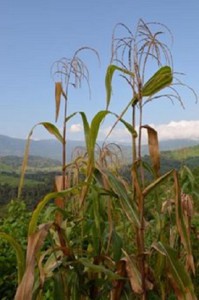 How? They were supposed to be fighting guerillas. They did not distinguish between the people with guns—the guerillas—and the people with hoes to mound up the dirt around the base of the corn plant, with machetes to cut the weeds that grow between the rows, with loosely woven sacks in which to collect the corn that’s been shucked.
How? They were supposed to be fighting guerillas. They did not distinguish between the people with guns—the guerillas—and the people with hoes to mound up the dirt around the base of the corn plant, with machetes to cut the weeds that grow between the rows, with loosely woven sacks in which to collect the corn that’s been shucked.
Why? The intellectual author of the Ixil genocide, Ríos Montt, like thousands of Latin Americans, was trained in “counter-insurgency techniques” by the United States—techniques including torture and arresting the family members of those being questioned.[3] Between 1981 and 1983, Montt oversaw seventy-seven massacres in the Ixil region alone.[4] Torture was common. They said the Ixil people were “pro-guerilla,” the “internal enemy.” And the money, millions of U.S. dollars, kept flowing.[5]
How? All of the Ixil people, an entire culture, became the enemy. A woman pregnant with the child of an Ixil man became the enemy. The child of an Ixil woman, born or not, became the enemy. The child will grow up to be a guerilla, they said. I have heard what they did to pregnant women. It moves my hands to clench my stomach, but clarifies nothing.
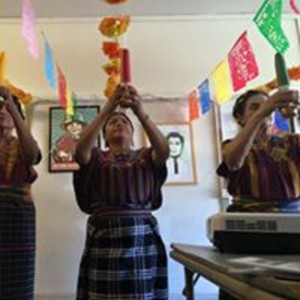
Mayan immigrants share cultural dance at a NISGUA event I attended in Los Angeles, CA. June, 2015. Photo Credit: Claudia D. Hernandez.
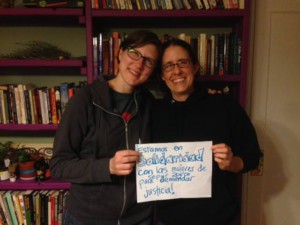
My friend Delila and I participate in NISGUA’s show of solidarity with Guatemalan women who survived sexual slavery. May, 2015. Seattle, WA.
Why? During his campaign, Donald Trump said both that he is pro-life and that the way to deal with enemies is to kill their family members. “The other thing with the terrorists is you have to take out their families,” he told Fox News. The first military operation he ordered was the raiding of a village in Yemen which, according to witnesses, killed an 8-year-old U.S. citizen.[7] She was the daughter of radical cleric Anwar al-Awlaki, a U.S. citizen who was also killed without a trial—in a drone strike under Obama in 2011.[8] Two weeks later, the Obama administration killed his son, also a U.S. citizen. He was sixteen, estranged from his father. He was eating dinner. When asked, former White House Press Secretary Robert Gibss said that the boy should’ve had “a more responsible father.”[9] It is fathomless.
Bright white clouds drape their veil along tree-covered peaks. I ask how and why over and over—or, rather, the land pulls these questions from me, each drop of water impels me to find something I can hold onto, something I can comprehend. But I cannot. It is like interrogating an innocent man. There are no answers here.
Afterword: In light of recent events, I cannot recommend more highly the documentary “Dirty Wars” by Jeremy Scahill. There is no other video, (or any book or article) that I would rather people watch right now. It is available on Netflix.
Unless otherwise noted, photos by NISGUA, Network in Solidarity with the People of Guatemala.
Footnotes:
[1] “Guatemala: Memory of Silence.” Report of the Commission for Historical Clarification, Conclusions and Recommendations, 101. [2] Ibid. 116. [3] Jake Hess. “Infamous US military school still draws fire.” Aljazeera, 9 Dec. 2014. Accessed 1 Feb. 2017. [4] Sanford, Victoria. “Violence and Genocide in Guatemala.” Yale University: New Haven, CT, 2016. Accessed 1 Feb. 2017. [5] Farah, Douglas. “Papers Show U.S. Role in Guatemalan Abuses.” Washington Post, 11 Mar. 1999. [6] Miller, Jeke J. “Donald Trump Will Continue Targeting Suspected American Terrorists Overseas.” Time, 31 Jan. 2017. Accessed 1 Feb. 2017. [7] “Democracy Now Headlines Jan 30, 2017.” Democracy Now: The War and Peace Report. Amy Goodman. Minute 12:10-13:14. Accessed Jan 30, 2017. [8] In light of recent events, I cannot recommend more highly the video “Dirty Wars” by Jeremy Scahill. It is also available on Youtube. [9] Friedersdorf, Conor. “How Team Obama Justifies the Killing of a 16-Year-Old American.” The Atlantic, 24 Oct. 2012. Accessed 31 Jan. 2017.
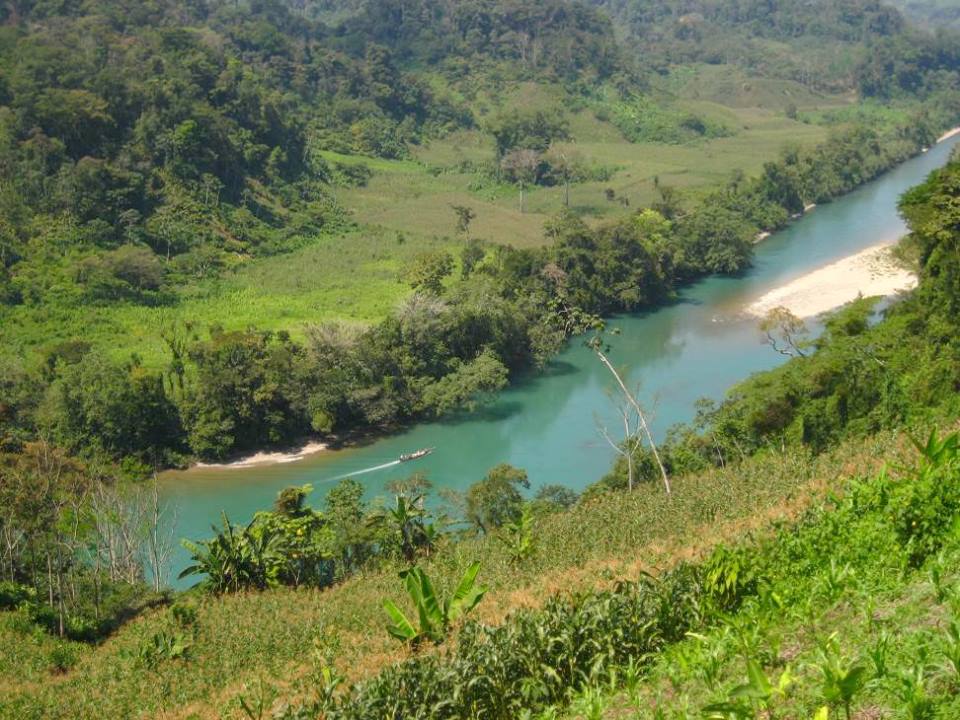
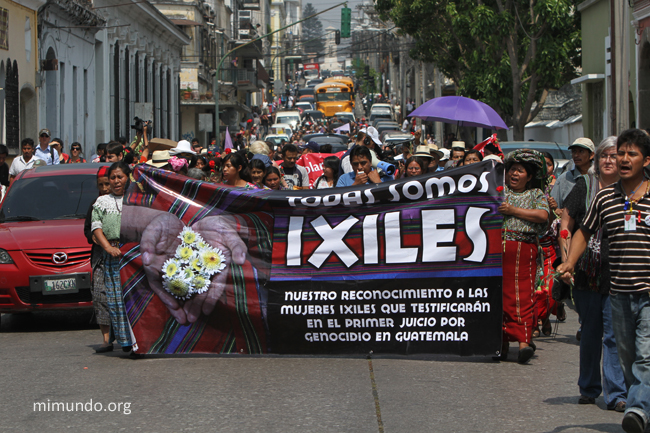
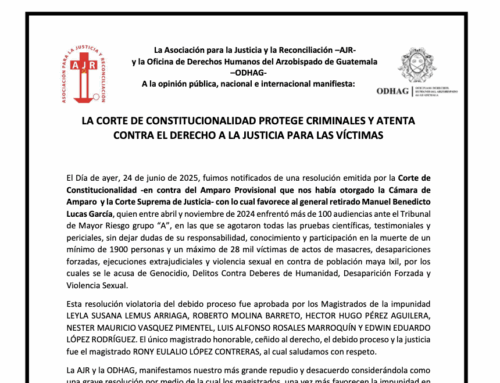
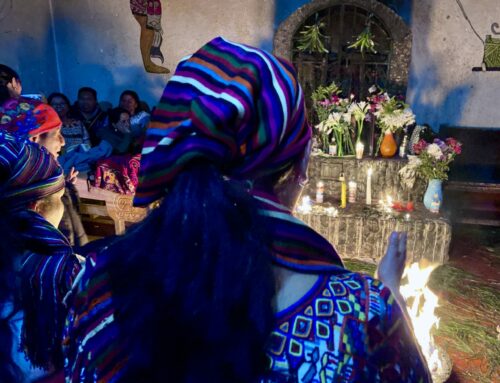
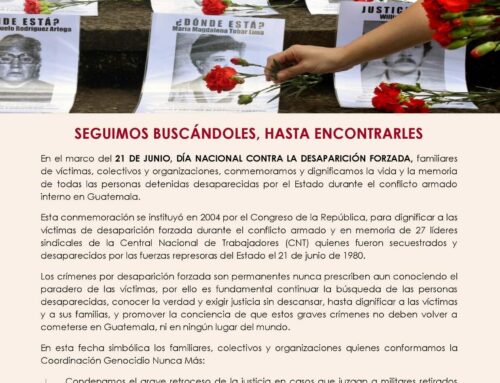
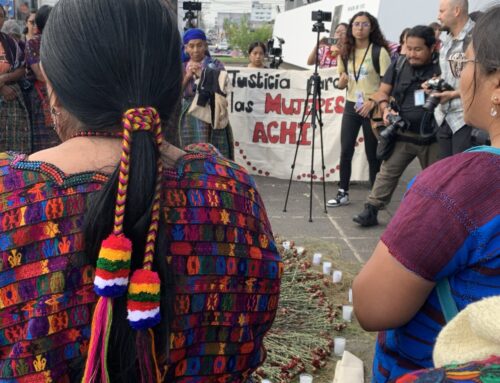
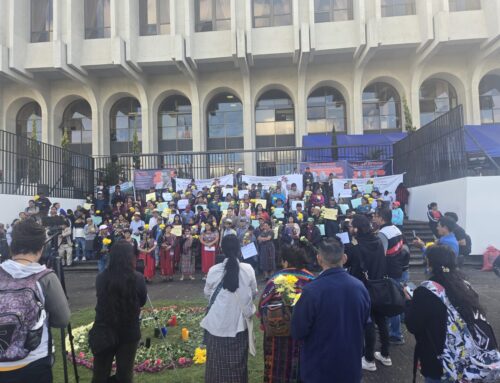
Leave A Comment